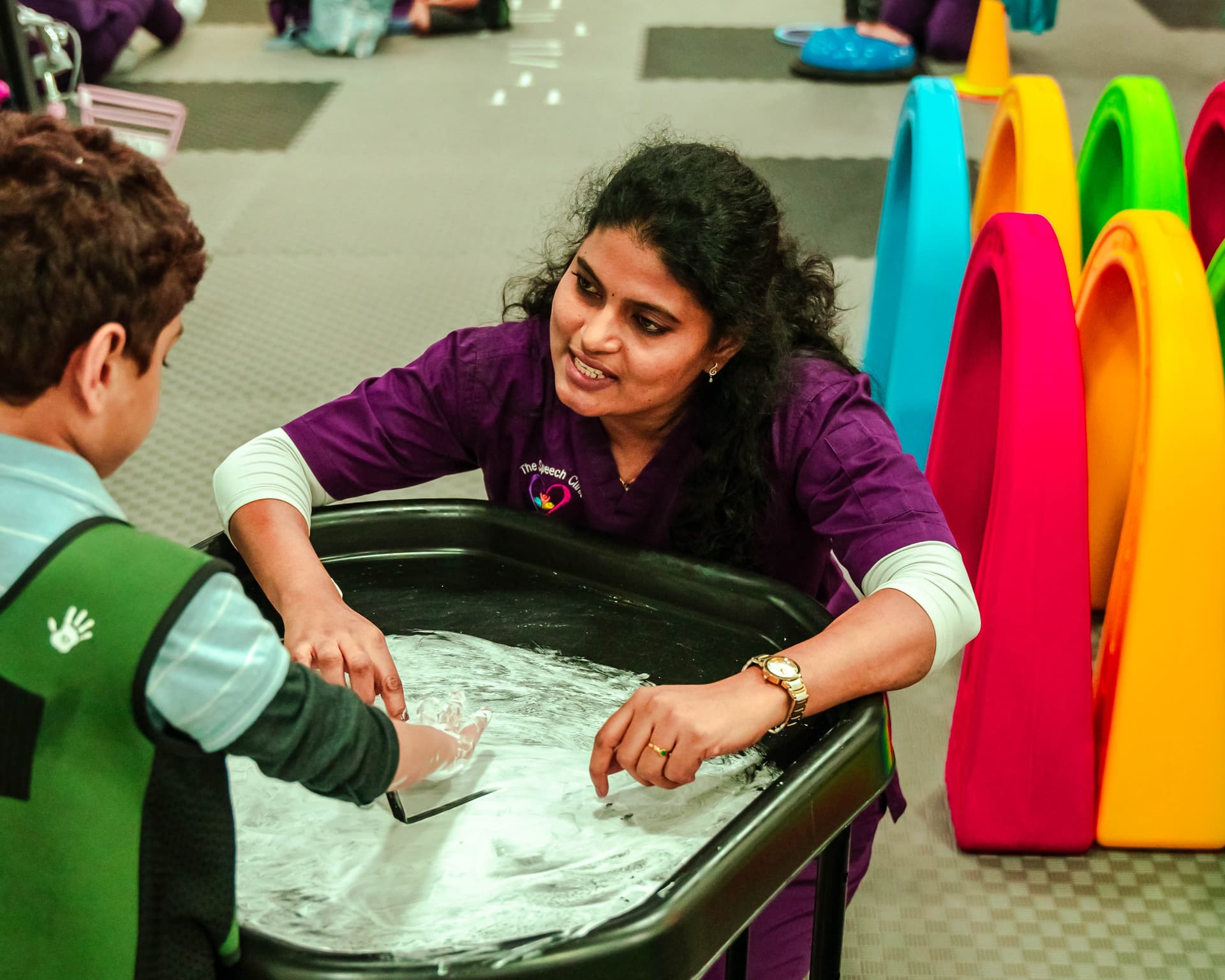Sensory Integration
Sensory Integration

Sensory integration is a neurological process that organizes and interprets sensory information from the environment. This involves processing input from various senses, including sight ( visual), sound ( auditory) , touch ( tactile) , taste ( gustatory), and smell ( olfactory), as well as proprioceptive (body position) , vestibular (balance and movement) senses and interoception ( feeling of knowing what is happening in our body).









At The Speech Clinic, our therapists are experts and certified in Sensory Integration from the University Of Southern California ( USC) and Collaborative For Leadership In Ayres Sensory Integration (CLASI). Difficulties in sensory integration can lead to challenges in everyday activities, often seen in individuals with conditions like autism spectrum disorder (ASD), attention deficit hyperactivity disorder (ADHD), and sensory processing disorder (SPD). At The Speech Clinic, we use personalized therapeutic approaches to focus on improving sensory processing skills and help the children process and respond to sensory information more effectively, improving their ability to engage with the world. By using targeted sensory activities, therapists support children in developing skills like focus, coordination, and emotional regulation, making everyday tasks more manageable. We have a well-equipped sensory room and a moveable sensory pod called Sensory On the Go ( SOG) to create a calming space for our kids to self-regulate. themselves
Red Flags of SPD:
Recognizing red flags for Sensory Processing Disorder (SPD) is essential for early intervention and support.
Infants and Toddlers:
- Grooming Difficulties: Resistance to activities like bathing, haircuts, or nail trimming.
- Eating Challenges: Refusal to eat certain food textures, flavors, or temperatures.
- Mess Aversion: Distress over getting hands or face dirty during meals or play.
- Clothing Sensitivity: Avoidance of specific fabrics or clothing styles due to discomfort.
- Social Withdrawal: Reluctance to engage with others, including family members.
Preschoolers:
- Sensory Sensitivities: Overreaction to touch, noise, smells, or crowds.
- Motor Skill Challenges: Clumsiness, poor coordination, or difficulty with tasks like running or jumping.
- Social Difficulties: Trouble making friends or engaging in group activities.
- Routine Disruptions: Difficulty transitioning between activities or adapting to changes.
School-Aged Children:
- Academic Challenges: Struggles with handwriting, sitting still, or completing assignments.
- Behavioral Issues: Impulsivity, distractibility, or excessive movement in classroom settings.
- Peer Relationships: Difficulty understanding social cues or maintaining friendships.
Adolescents and Adults:
- Emotional Regulation: Low self-esteem, fear of failure, or avoidance of new tasks.
- Physical Coordination: Clumsiness, slow movements, or challenges with motor tasks.
- Sensory Sensitivities: Overreaction to touch, noise, smells, or crowded environments.